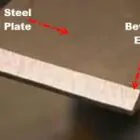Plastic welding is the process of joining two or more pieces of plastic together by heating them to a certain temperature until they become flexible and then pressing them together to join them. This is a method that people use a lot in the manufacturing industry, but it does have a few problems. In this blog post, we’ll talk about the five biggest problems with plastic welding: the cost, the effect on the environment, the limited types of plastic that you can use, warping and cracking, and the difficulty of making a strong bond.
Cost:
One of the biggest problems with plastic welding is that it is expensive. It costs a lot because it requires specialized tools and trained people. Also, welding materials made of plastic, like rods and pellets, can be expensive. This makes this form of welding a more expensive way to join plastics than other methods like glue bonding or mechanical fastening.
Environmental Impact:
Plastic welding is also bad for the environment, which is another problem with it. Fumes and particles get into the air when you weld the plastic, which can be bad for both the workers and the environment. Also, it can make a lot of waste plastic, which can add to the problem of plastic pollution, which is getting worse.
Only a Few Kinds of Plastic:
You can’t weld all kinds of plastic. Most of the time welders use, polyethylene, polypropylene, and PVC to weld plastics together. But other kinds of plastic, like ABS, nylon, and PET, you cannot weld them in the usual way. This limits the kinds of plastic items that you can make with plastic welding and can also make production more expensive.
Getting bent and breaking:
Another problem with plastic welding is that the finished product might bend or break. If the plastic isn’t at the right temperature or if too much pressure is put on it during the welding process, it can warp or crack, making the product weak and unusable. This can cause costs and production times to go up because you will have to throw away the product that breaks and you have to make a new one.
How Hard It Is to Form a Strong Bond:
Lastly, it can be hard to get a strong bond when you weld plastic. Pipes and tanks, which need to be able to withstand high pressure and stress, need a strong bond. However, it can be hard to make a strong bond with this welding form. This is because the plastic needs to be heated to a certain temperature and put under pressure for a certain amount of time. The bond will be weak if the plastic is not heated or pressed long enough.
Conclusion:
Once can use Plastic in production to attach two plastic items, however it has drawbacks. It includes issues such cost, environmental impact, limited plastic varieties, warping and cracking, and bonding difficulty. Plastic welding is still in use to manufacture a variety of strong, long-lasting goods despite these issues.
Before picking a this welding method, consider the advantages and downsides. Before choosing plastic welding, weigh the advantages and downsides and consult specialists.





